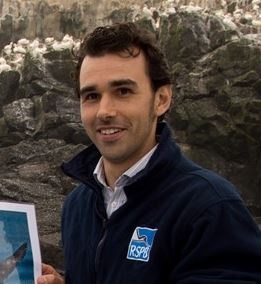February 2021
Last week the Marine Management Organisation launched proposals to prohibit all bottom towed fishing in four Marine Protected Areas (MPAs), including the Dogger Bank MPA. These welcome proposals are good news for an important part of the seabed – and for the seabirds who rely on it.
The Dogger Bank is the largest sandbank in the North Sea and lies about 100 miles off the Yorkshire coast straddling the waters of the UK supporting a high density of sandeels. Sandeels are small, slender fish are usually found shoaling (gathering in very large groups) over the seabed or buried in the sand.
In the North Sea, sandeels provide a vital food source for breeding seabirds, such as those nesting on the Flambrough and Filey Cliffs, but are also the target of an industrial fishery conducted mainly by Denmark. This fishing effort is focused on processing sandeel into fishmeal and oil, which is then used in feedstuffs for farmed salmon, mink and other livestock.
The relationship between these fish and UK seabird breeding success was investigated by the RSPB researchers in 2017. The study suggested a link between the amount of sandeels caught by fishermen and the breeding success of kittiwakes (a small species of gull, currently red-listed in the UK), with higher intensity fishing leading to lower numbers of chicks being produced. The study showed an overlap with foraging areas of kittiwakes from eastern English colonies, raising the prospect that the fishery could adversely affect the birds' populations.
Using data collected between 1986 and 2014, the RSPB found that higher kittiwake breeding success at colonies was correlated with lower sandeel fishing intensity. This suggests that, at times over the last 30 years, particularly in the early 2000s, when catches were much larger, the fishing levels may have been high enough to reduce kittiwake breeding success.
The decline of the UKs internationally important seabird population is well documented, and the causes lie in a dangerous mix of unsustainable fishing, the impacts of climate change and at times poorly placed offshore developments. For some species of UK seabirds, such as the kittiwake, the pressures are more intense. As a surface feeder, the Kittiwake is not able to dive the depths of other seabirds like the puffin. Instead, it relies on being able to source its food from shallow sea areas, like the Dogger Bank.
In 2019, in response to the pressures on our seabird populations, the RSPB called on the UK Government to place much stronger curbs on the offshore sandeel fishery, and ideally a total ban on the fishery in UK waters. In so doing we hoped that the seabird colonies would be thrown a much needed lifeline, and begin the slow path to recovery.
The RSPB was not alone in recognising the scale of the challenge in reversing seabird declines. In 2020 Environment Minister Rebecca Pow, announced plans for new protections for seabirds and to create a comprehensive Seabird Conservation Strategy. While still in development, the strategy is looking for clear mechanisms to deliver meaningful change for seabirds.
This sustained work, culmination of many years of research into UK seabrids, has led to this month’s MMO proposal for a ban on bottom towed fishing. We now have a real opportunity to limit a damaging fishing practice in one of the jewels of the North Sea. If adopted, the closure of Dogger Bank to benthic fishing practices could be the first, much needed, step towards restoring our seabird colonies and the seas they depend on.
Gareth Cunningham is Principle Marine Policy Officer at RSPB and Vice-Chair of the Link Marine Group
Follow @seabirdbiker and @Natures_Voice
The opinions expressed in this blog are the author's and not necessarily those of the wider Link membership.




Latest Blog Posts